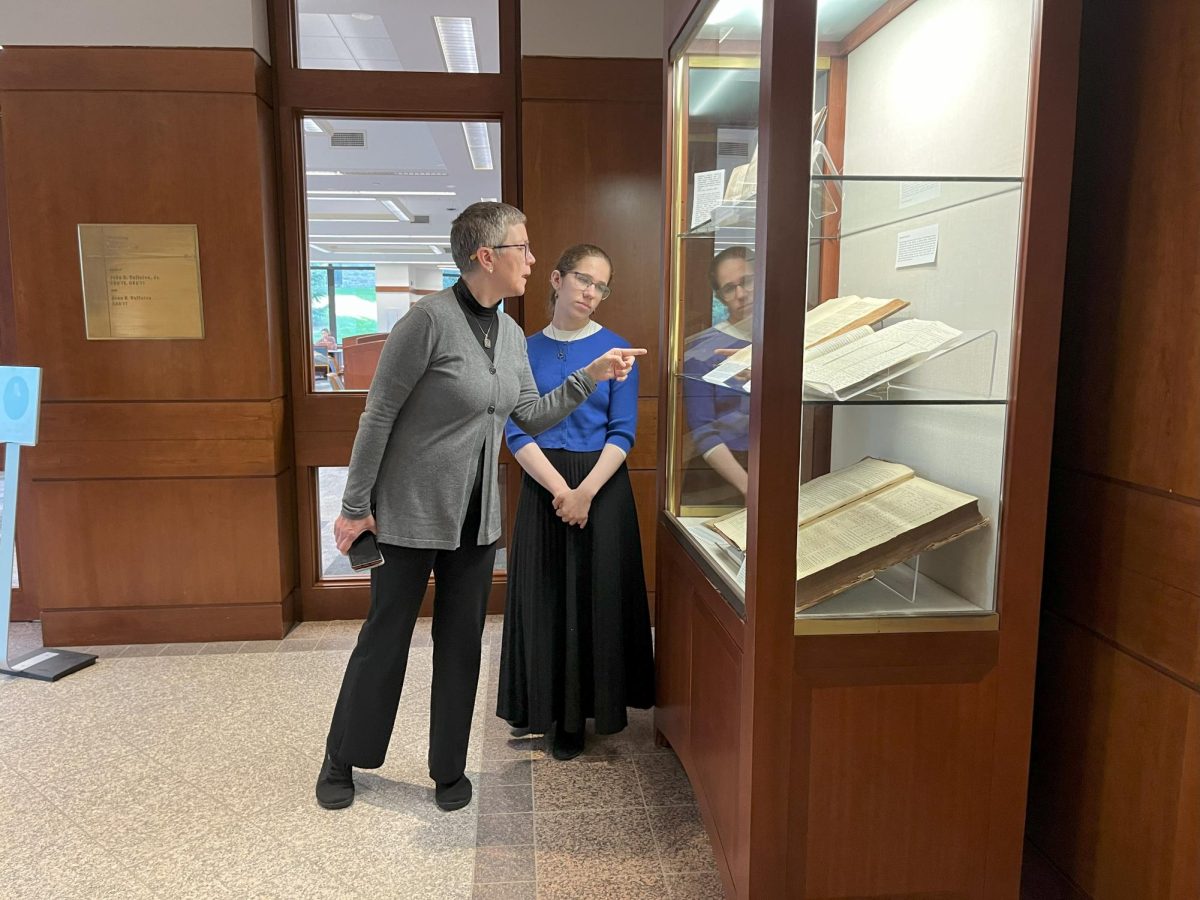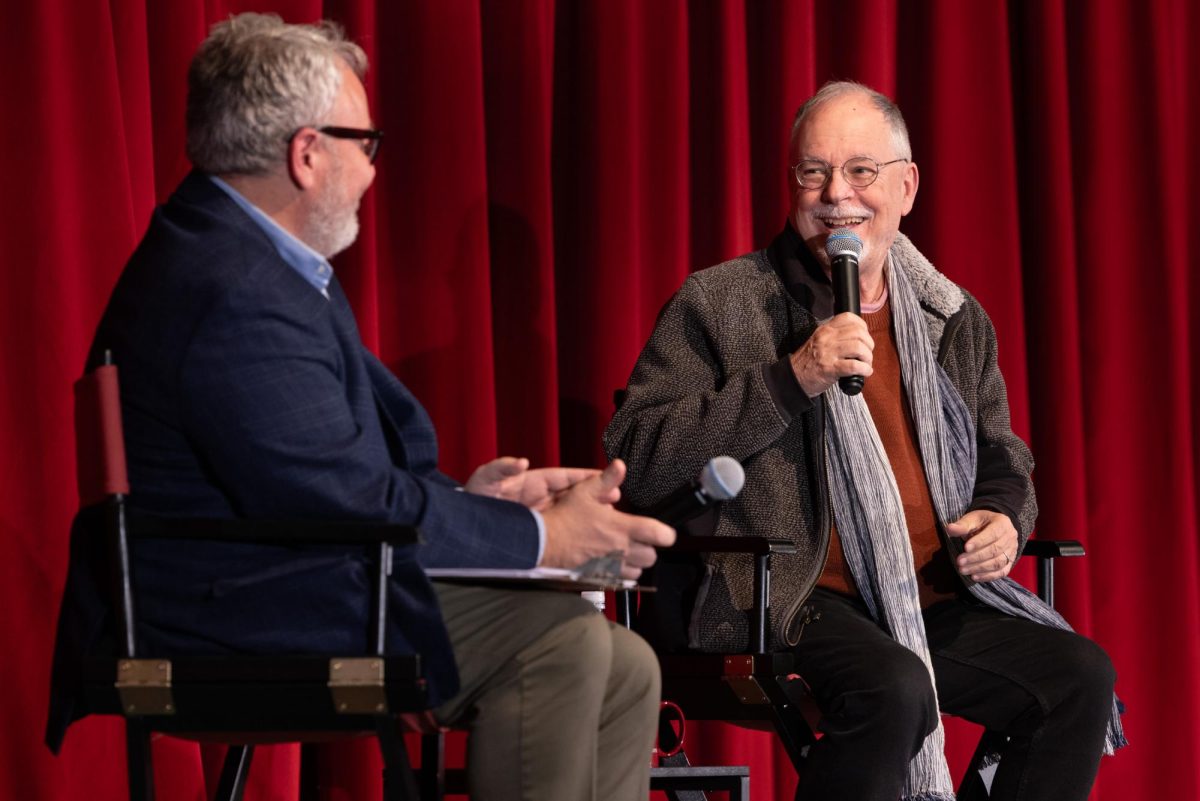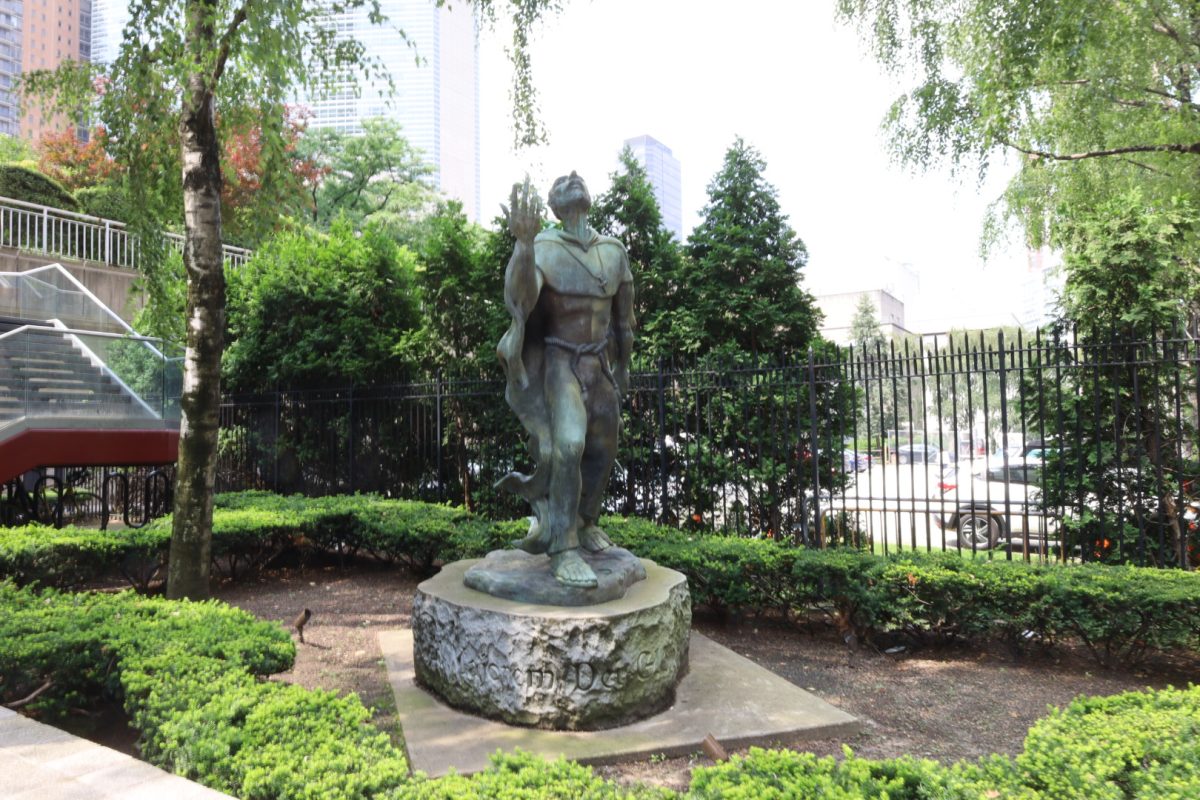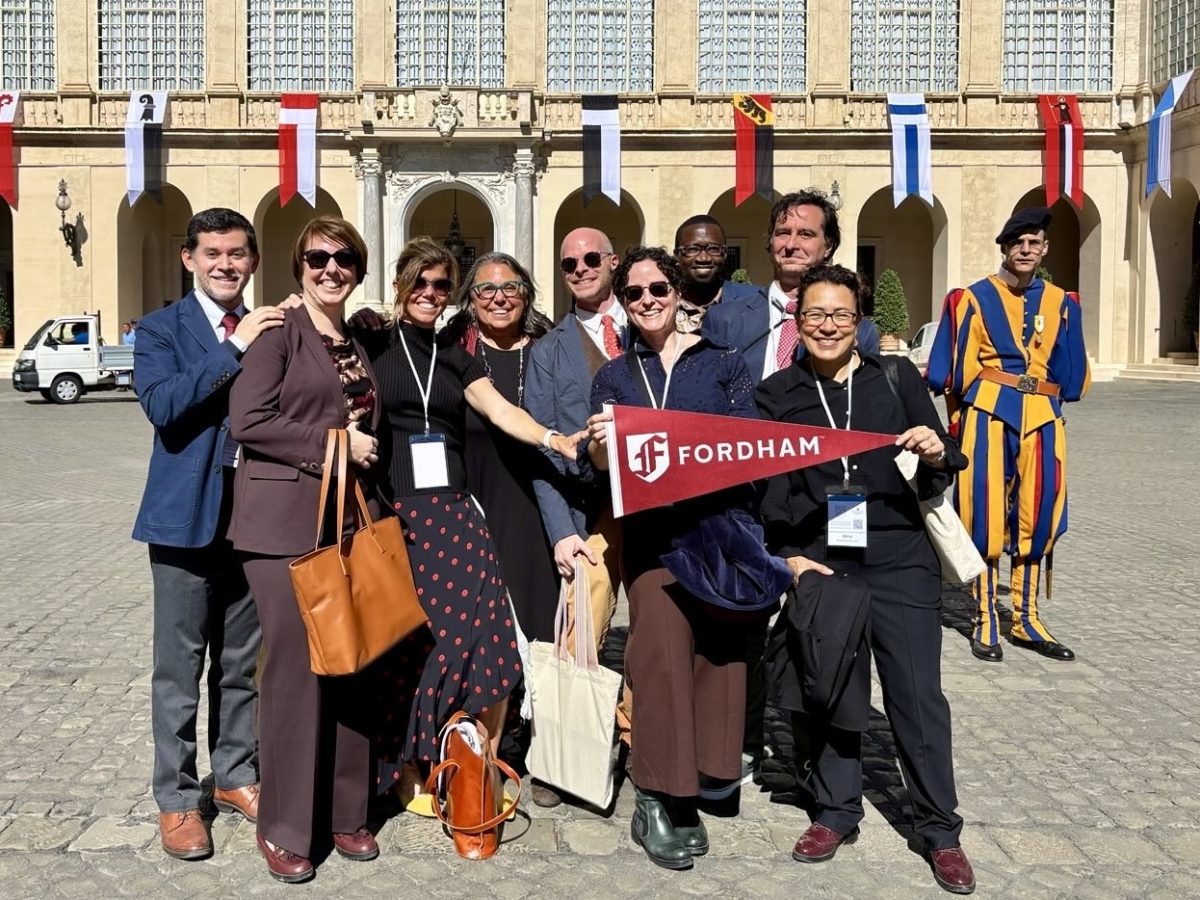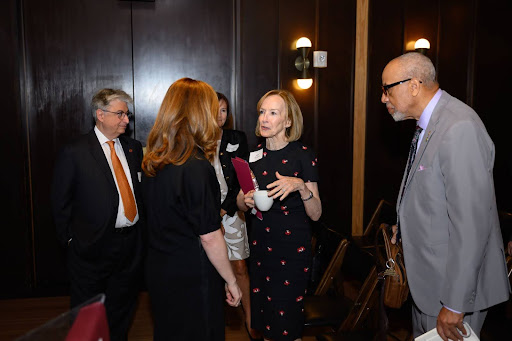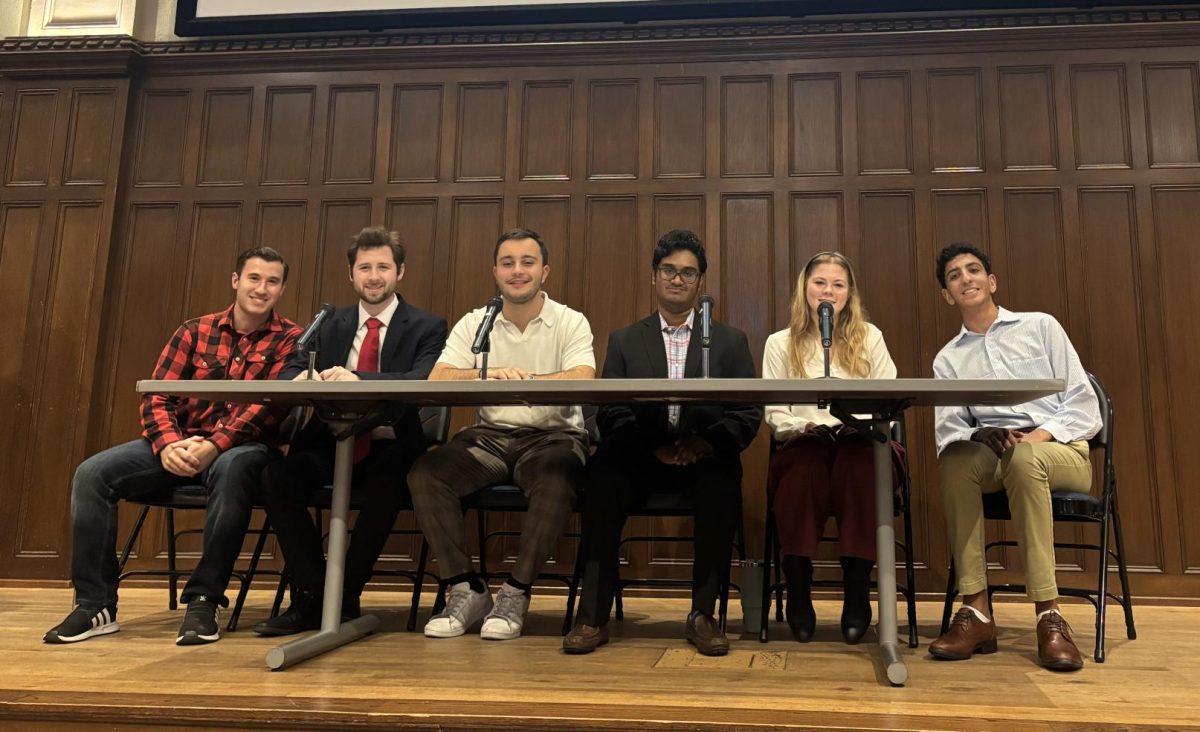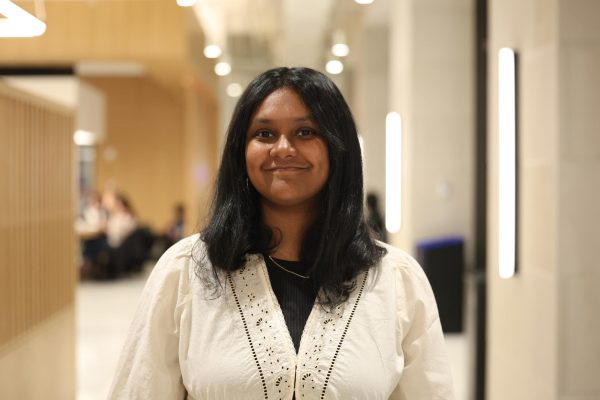A new exhibit at Fordham University’s Walsh Library opened on Oct. 8 called “Fordham’s Babel: An Exploration of World Languages in the Special Collections.” The curators, Miriam Krakowski, FCRH ’27, Gabriella DiMeglio, archives and special collections librarian, and Dr. Magda Teter, Shivdler chair of Judaic studies, hosted a tour and reception of the event on opening day.
Featuring scholarly writings, archival work and sketches made by scholars of the era, “Fordham’s Babel” traces out a lineage of Western understandings of multiculturalism and linguistics concentrated in the early modern period to the 19th century. It begins with artifacts in a wide-ranging set of languages.
“The Hebrew Bible is a Middle Eastern text, written in the Middle East and it’s set in the context of what’s today Israel and Palestine and Egypt and today’s Iraq and even Iran,” explained Teter. “What we wanted to [do], because the Bible is such a quintessential Western text, absorbed as a Western text, we wanted to place it in the east where it belongs, gazing east at these other languages, forgetting what it would then become as the Western text.”
To this end, the exhibit features multiple artifacts from Fordham’s collections in a variety of languages, including a page of an Arabic prayer book from the 16th century, a Taliput manuscript from the 18th century and a Greek petition estimated to be from the second century B.C.E.
“Fordham’s Babel” takes as its frontal image an engraving from “Turris Babel,” a book by 17th century Jesuit scholar Athanasius Kircher applying the scientific concepts of his time to the Biblical story of the Tower of Babel. Teter explained that “Turris Babel” was like many other linguistic examinations of time in that it grew out of Christian theological tradition.
“This keen interest in studying languages started in the Renaissance era by trying to understand the Biblical text,” explained Teter. “Then, you have missionizing — and Jesuits here play an important role. They go all over the world. They study languages in order to proselytize and spread Christianity, but they also bring back that knowledge.”
The exhibit also explored the classifications of multilingual documents in more recent centuries.
In concluding the tour, Teter and Krakowski lingered on the final shelf featuring three collections compiled by The Society of Foliophiles — a 20th-century organization of New York book dealers who separated rare books into leaves and sold sets of them as collections. One collection was titled “Pages of English Literature,” another “Pages From European Literature” and the third was “Specimens of Oriental MSS and Printing” — a categorization which, at the time, included Jewish text.
“What do you hear in the way these boxes are titled?” the curators asked the group.
“It’s not considered literature,” responded an attendee. Another chimed in: “It’s like another form of inquisition.”
DiMeglio explained that the process of curating an exhibit starts out with a broad idea that becomes refined as artifacts are compiled.
“It always starts with an idea for what we want to say with the exhibit generally,” DiMeglio said. “That definitely morphs as you go, because a big part of doing these exhibits and doing archival research, in general, I’ve found is exploring things as you go, because you don’t really know what’s back there. It’s not like you have the book summary at your fingertips a lot of the time.”
Teter initially proposed the idea of exploring different languages within Fordham’s Judaica collection, and the team began in June exploring items that could belong in a possible exhibit. Krakowski spent the summer working on doing much of this archival work — which also brought in items in Fordham’s Jesuitica collection — before the team finalized the arc they wanted the exhibit to take.
“I started by going in the catalog, limiting my searches to special collections… I pulled up a list of languages and just started searching to see what would show up,” explained Krakowski. “Once I had a solid number of things that were related to language in one way or another, I started trying to organize them into sections. We then started discussing, ‘What story does this tell?’ because language itself is not a story. We eventually settled on the Western implications of language and the way the Western world treats language.”
Krakowski reflected that viewing the exhibit on its opening day was a fulfilling moment.
“This is the first time I’m seeing it all put together with the labels,” Krakowski said. “Until I was there today, I didn’t believe that it was actually going to exist. It was just incredible to see all the books that I plucked out of the collection at random coming together to form an actual exhibit.”



































































































































































































